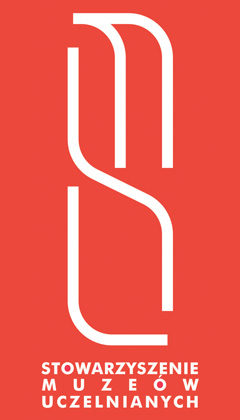Czesław Poborski Museum of Mineral Deposit Geology
Faculty of Mining, Safety Engineering and Industrial Automation
Silesian University of Technology in Gliwice
ul. Akademicka 2
44-100 Gliwice
Tel. (32) 237 26 08
ewa.gluszek@polsl.pl
www.muzeum-geologiczne.polsl.pl
Free admission
Mondays – Fridays: 9 am – 2 pm
Group visits (advance booking is essential – please call or email).
Scientific supervision: Prof. Rafał Morga
Staff: Ewa Głuszek MSc
The Czesław Poborski Museum of Mineral Deposit Geology at the Faculty of Mining, Safety Engineering and Industrial Automation of the Silesian University of Technology in Gliwice is the largest research and teaching facility of this type in the Upper Silesia (Górny Śląsk) region. The exhibits consist of commercial mineral resources from all over the world, as well as a collection of minerals, rocks and fossils. The exhibition space covers 272 sq. metres with an additional 500 sq. metres (display cabinets in the corridors). The institution has over 25,500 exhibits. It attracts almost 4,000 visitors a year. The museum was established on the basis of an agreement concluded between the rector of the Silesian University of Technology, Prof. Gabriel Kniaginin, and the director of the Upper Silesian Museum (Muzeum Górnośląskie) in Bytom, Prof. Marian Gładysz, in 1953. Based on the agreement, the Upper Silesian Museum transferred the
geological and palaeontological exhibits which had been owned by the former Silesian Museum in Katowice and the municipal museums in Gliwice, Bytom and Chorzów – which comprised the part of the collections that had survived the Second World War – to the Silesian University of Technology. Some of the exhibits were given as long term loans and others were donated. The first permanent geological exhibition was organized by a team from the Department of Mineral Deposit Geology under the guidance of Prof. Czesław Poborski in collaboration with museum specialists from the Upper Silesian Museum in Bytom. The exhibition was officially opened on 22 June 1961 which is the date considered to be the start of the museum’s existence, despite the fact that it was officially established based on Order No. 24/73/74 of the rector of the Silesian University of Technology dated 15 February 1974, which stipulated the establishment of a separate entity – the Museum of Mineral Deposit Geology – within the Faculty of Mining. The museum’s collection is one of the largest of its kind in Poland and includes geological specimens gathered primarily in the 19th century and in the first half of the 20th century. Until the outbreak of the Second World War, they were stored in various museums and mining schools across Upper Silesia. During the years of German occupation, the geological and palaeontological exhibits were moved from the municipal museums to cellars – which were not particularly suited for storage purposes – in Chorzów and Bytom, and only later were they transferred to the Silesian University of Technology. As a result of the many changes to their place of storage and frequent plundering, the exhibits were considerably depleted. Many of the collections lost their original value due to becoming disorganized, and the loss of their labels. The inventories and full documentation of the collections also went missing. Actions aimed at recovering the collections’ didactic and
scientific value were taken by the museum’s staff in stages, and were focused on qualifying the greatest number of exhibits to scientific collections in the most rational manner possible. In the following years the collection grew, and was systematically expanded by exhibits donated by ore and rock mines, private collectors, as well as the staff and students of the Faculty of Mining and Geology. Unfortunately, despite the many years of hard work and efforts to compile all the exhibits, the inventory has not yet been completed. The museum only has lists of exhibits from the main exhibitions, which have not been assigned inventory numbers. A number of valuable collections also require detailed research. The fact that the collections appear on the ‛Museums of the World’ list published by K.G. Saur in Munich and that they are also registered at ICOM through UNESCO (1994) testifies to their scientific and didactic value.














